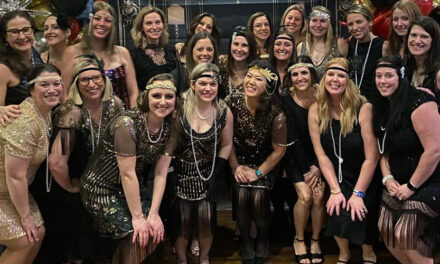Published March 4, 2020
By DAN TOMASELLO
LYNNFIELD — With the elementary schools running at capacity due to an enrollment boom, the Board of Selectmen voted to form the School Building Study Committee on Monday.
The School Building Study Committee will consist of School Enrollment Capacity and Exploration Committee (SECEC) Chairman John Scenna, Board of Selectmen Chairman Phil Crawford, School Committee Chairman Jamie Hayman, School Committeeman Tim Doyle, Finance Committee Chairman Chris Mattia, former Finance Committee Chairman Jack Dahlstedt, local developer Marco Tammaro and a Huckleberry Hill parent who will be named at a later date. Scenna was tapped as the School Building Study Committee’s chairman.
Additionally, the selectmen and School Committee each voted to authorize Superintendent Jane Tremblay to submit statements of interest to the Massachusetts School Building Authority with the hope of receiving state money to help finance the cost of a possible building project.
“It is a very long process that could take several years,” said Tremblay. “There are no guarantees funds will be available for Lynnfield.”
“Running at capacity”
Prior to the three votes, Scenna told the selectmen and the School Committee that the SECEC was formed two years ago in the wake of increasing enrollment at the elementary schools. In order to gain a better understanding about the problem, the town hired the New England School Development Council (NESDEC) to conduct a demographic study.
As part of the study, Scenna said NESDEC reviewed building permits, reviewed home and condominium sales, and interviewed local officials and realtors. NESDEC also examined birth rates and analyzed the number of children currently living in multi-family housing developments.
Scenna said NESDEC is projecting that elementary school enrollment will be increasing from 870 students in the 2019-2020 school year to 1,023 students in the 2029-2030 school year.
“The study is projecting a 17.7 percent increase in overall student enrollment over the next 10 years,” said Scenna.
While NESDEC’s report includes data on permitted projects, Scenna said it does not include three potential developments on the horizon, including the Bali Hai apartment building and a possible upper Main Street subdivision. He also said an over-55 townhouse development could be built along the Sagamore Spring Golf Club or up to 84 single-family homes could be built on the course.
Scenna noted the town hired Tappé Architects in order to study the two elementary schools’ capacity. While Tappé Architects has yet to finalize its report, Scenna said the firm is recommending that permanent additions be built because modular classrooms “don’t make sense economically.” He also said neither school was designed to accommodate a second floor.
“The sites can accommodate permanent additions,” said Scenna. “The architect has informed us that the elementary schools are running at capacity. Next year’s projected enrollment should be okay, but there will be an issue by the 2021-2022 school year. Something has to change in order to generate more classroom capacity.”
After Scenna concluded his part of the presentation, Tremblay gave an overview of projected elementary school enrollment for the 2020-2024 school years.
Both elementary schools will be running five sections of kindergarten next year. Tremblay is currently projecting that 103 students will be enrolled in Huckleberry Hill School while 94 kindergarteners are projected to be enrolled at Summer Street School. She said around 70 kindergarten students were enrolled at each school in previous years.
“The numbers are abnormally high,” said Tremblay.
Tremblay said there are 22 classrooms at Huckleberry Hill School and there are 21 classrooms at Summer Street. She noted Summer Street has two additional classrooms dedicated for preschool students, and both schools have separate rooms for art and music.
Both elementary schools will be able to handle the enrollment spike next year, Tremblay said. She noted an existing classroom with a dividing wall at Summer Street that is used for special education programs will be converted into a traditional classroom. She said Summer Street will find a new location for the existing programs.
“We have done that in the past,” said Tremblay. “We will have viable space for the special education programs. We will need to move some of our tutors around. That is how we are going to get through the crunch next year.”
Hayman said one of his daughters used that space as her first grade classroom.
“That special education room is totally viable as a classroom,” said Hayman.
Based on the enrollment projections, Tremblay is projecting that 43 elementary classrooms will be needed for the 2020-2021 school year. She is projecting 46 classrooms will be needed for the 2021-2022 school year, 47 will be needed for the 2022-2023 school year and 48 will be needed for the 2023-2024 school year.
Scenna said the secondary schools are not at capacity and have enough space to accommodate the enrollment boom.
Tremblay gave an overview of some of the different options that could free up space. She said going to art-on-a-cart and music-on-a-cart models or having satellite locations can work on a temporary basis, but are not ideal long-term solutions because both programs would be jeopardized.
“We have a large number of students who find their happiness with art and music,” said Tremblay. “Social-emotional learning has been a huge topic of conversation for the School Department and the town over the past few years, and I would argue having a comprehensive art program and music program is helping students socially and emotionally.”
Tremblay noted another challenge associated with moving toward a music-on-a-cart model on a permanent basis is it would distract students in abutting classes.
“If we put music-on-a-cart and the instructor had to go from classroom to classroom, we would have to completely rule out that students will be playing any instruments because if you have a first grade classroom reading, you can’t have another first grade classroom playing instruments,” said Tremblay.
Tremblay said redistricting is not an option because both schools are running at capacity.
“We are hard pressed now to put 10 more kids in either one of the elementary schools,” said Tremblay. “It is not really an option.”
Tremblay also said increasing class sizes would be detrimental to student achievement.
The superintendent said relocating the preschool back to the School Department’s central office on Salem Street will not solve the problem. She said moving the preschool back to Salem Street would have a negative educational impact because the move has benefitted the preschool’s curriculum. She also said students will lose access to spaces such as the gym, media center and music room. She said the central office will need to be reconfigured, which will require capital expenses.
“There would also be an expense to the operating budget that will not go away because we will need a full-time director, a full-time nurse and additional personnel for occupational therapy, physical therapy, speech and language pathology and special education,” said Tremblay. “Between $300,000 and $350,000 would have to be put in the operating budget every year.”
Crawford asked how the preschool was staffed before it was moved to Summer Street.
Tremblay recalled that the preschool did not have direct oversight and did not have a nurse when it was located on Salem Street.
“It would be impossible not to have a full-time nurse on site,” said Tremblay.
Even if the School Department implemented all of the different options, Tremblay said they “don’t solve the problem.”
“A sense of urgency”
After Scenna and Tremblay concluded their presentation, they answered several questions.
In response to a question from Crawford, Scenna said between six and eight classrooms will be needed to address the enrollment spike.
“By going to the 50-classroom model, that will give you the capability to have five classes in grades K-4 at each school,” said Scenna.
Selectman Dick Dalton said, “There is no other possible outcome other than us exploring additional space.”
“I think there needs to be a sense of urgency,” said Dalton. “I would like to see us have a plan laid out so everyone understands where we are going. It needs our collective and immediate attention.”
Crawford agreed.
“I think it’s paramount that we move this along,” said Crawford.
Crawford thanked the SECEC for working to compile the report. He also thanked Selectman Chris Barrett for proposing that the space committee be formed.
“It showed that this is a real issue,” said Crawford.




